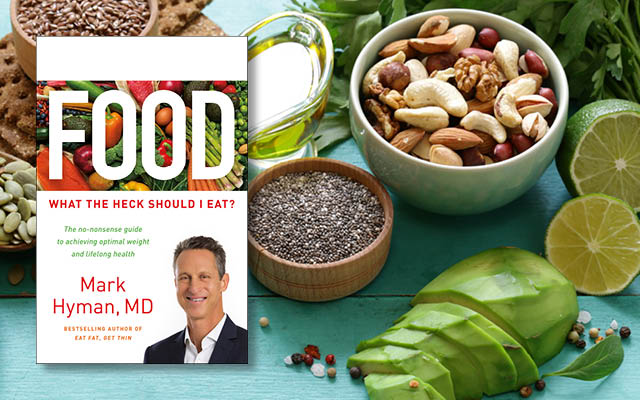Today’s nutrition pros often disagree on the finer points of healthy eating. And every few months, a buzzy new diet crops up in the wellness community, promising to help you shed unwanted pounds or clear your brain fog — that is, until it’s contradicted by the next trend. So, what’s a health-conscious eater to do?
Many experts — even those who support a specific way of eating — say that the healthiest diet is the one that works best for you.
“I’ve been a vegetarian and vegan for many years and I’m in excellent health, but that diet doesn’t necessarily work for everyone,” says nutrition scientist and Stanford professor Christopher Gardner, PhD. “I would never say that someone must give up meat to be healthy. Different people have different nutritional needs.”
There’s no one-size-fits-all approach to good nutrition, agrees Jason Fung, MD, author of The Obesity Code. The key is to home in on your particular needs before deciding how to meet them.
“If your car is out of gas, changing the battery is not effective,” Fung says. “And if your battery is dead, filling up the gas tank is not effective. But in nutrition, we have some people arguing that the problem for everybody is an empty gas tank, and we have other people insisting that the problem for everybody is low batteries.”
No one is arguing that what you eat doesn’t matter. It’s more that the universal principles of healthy eating are found in the broad guidelines — eat whole, real foods, and make sure a lot of those foods are plants — and less in the specifics.
“I shouldn’t have a job,” says Gardner, who has devoted his career to the study of the potential health benefits of various diets. “If people just ate whole, real food, I likely wouldn’t have a job.”
Of course, some people have specific nutritional and health needs. So before you attempt a dietary shift, it’s important to have a goal in mind, whether it’s easing particular symptoms like digestive distress or joint pain, improving energy levels, or losing weight. Whatever your objective, there is a style of eating to meet your unique needs. Here’s a look at six of today’s trending diets:
Vegetarian/Vegan
What it is: Vegetarians exclude meat but eat other animal products, such as dairy, eggs, and honey. Vegans don’t eat any animal products.
Pros: Done well, vegan and vegetarian diets are brimming with phytonutrient-rich plant foods. Diets high in vegetables and deeply pigmented, low-glycemic fruits like berries are consistently correlated with improved health and longevity. Eating more plants is one of the best things you can do for your health.
Cons: Done poorly, vegan and vegetarian diets can be high in unhealthy carbohydrates. For example, a stack of pancakes with artificial syrup from a fast-food restaurant constitutes a vegetarian breakfast, and a bag of potato chips and a diet soda qualify as a vegan lunch. Without a concerted effort, vegans and vegetarians can get too little healthy fat and protein, making them vulnerable to blood-sugar swings and nutrient deficiencies. Vegans need to be especially careful to get enough vitamin B12, which is largely lacking in plant-only diets. B12 deficiency can cause serious problems including nerve damage and cognitive difficulties, and unless you get your blood levels tested, you may not know you’re deficient.
If you try it: Focus on eating whole, real plant foods and getting enough high-quality protein and fat. Watch out for signs of blood-sugar issues — like feeling really energetic right after eating, and then crashing an hour later. If this is happening regularly, try to incorporate more healthy fat and protein at your meals. If you are eating a vegan diet, be sure to monitor your B12 levels.
Raw Food
What it is: People who follow a raw-food diet eat only food that hasn’t been heated above a specific temperature (usually around 118 degrees F), because high heat can destroy the enzymes in plant foods. Heating food can also generate carcinogens.
Pros: Raw-food adherents tend to eat a lot of whole, fresh fruits and vegetables — and any diet high in plants confers health benefits.
Cons: Most raw-foodists eschew meat and dairy, making them vulnerable to deficiencies in B12, iron, essential fatty acids, and more. Also, certain health-promoting plant compounds become more bioavailable after being heated — such as the lycopene found in tomatoes. Some raw-foodists eat raw animal products, such as eggs, fish, meat, and unpasteurized dairy. Eating these foods uncooked can increase the risk of exposure to illness-causing germs, like salmonella and botulism.
If you try it: Strive to get enough healthy sources of protein, like nuts and seeds, to make sure you are eating a balanced diet. Also, make sure to include enough dietary fat, such as avocados, extra-virgin olive oil, and coconut oil. Many fruits and veggies contain vitamins and antioxidants that are fat-soluble, meaning your body needs fat for optimal nutrient absorption. Lastly, raw-food diets can be highly restrictive, so be sure to pay close attention to any possible nutrient deficiencies.
Whole30
What it is: The Whole30 plan is designed to reset health by removing specific foods from the diet for 30 days. These foods include top allergens, like dairy and grains, and inflammatory items, like sugar and alcohol. The “allowed” foods on the Whole30 are whole, fresh foods, including meat, eggs and seafood; as many vegetables as you care to eat; and some fruits. You can find the official Whole30 rules here.
Pros: Many people experience frustrating symptoms — like weight-loss resistance, skin issues, digestive problems, and achy joints — without realizing that a food sensitivity is triggering the problem. Many experts consider eliminating these foods for several weeks (and then reintroducing them to see how you react) the gold standard in identifying food triggers. The Whole30 diet is anti-inflammatory, especially when participants opt for organic, grassfed options.
Cons: Done well, the Whole30 presents very few cons. Most people don’t have negative reactions from temporarily eliminating allergenic foods. Also, with pastured animal proteins, most vegetables, and low-glycemic fruits on the “allowed” list, you’re unlikely to struggle with nutrient deficiencies. A potential limitation is that the Whole30 plan doesn’t omit enough potential allergens. For instance, it’s not uncommon for people to have negative reactions to eggs, which are allowed on Whole30. Same with nuts (which are limited on the plan, but still permitted). The diet also encourages some high-FODMAP foods like onion and garlic, which can aggravate symptoms for people with SIBO and IBS.
If you try it: Replace what you can’t eat with fresh, whole, organic, and pastured options. If you still eat mostly packaged and processed foods, you might be able to identify food triggers at the end of 30 days, but you’ll miss out on the seismic health benefits of eating real food. And if you don’t cook much, plan to spend a little more time in your kitchen. Cooking at home will allow you to maximize the health benefits you get from the Whole30.
Paleo diet
What it is: The paleo protocol encourages eating like our ancient ancestors, with a diet rich in meat, non-starchy vegetables, and forageable, low-glycemic fruit. Dairy, grains, and legumes are not allowed. Pastured and organic options are heavily encouraged.
Pros: Grassfed, organic red meat is rich in inflammation-fighting omega-3 fatty acids. Lamb is also one of the best sources of conjugated linoleic acid (CLA), an omega-6 fatty acid that has a surprising number of protective health benefits. The emphasis on lots of phytonutrient-rich vegetables — similar to vegan and vegetarian diets — is a core component of healthy eating. The paleo diet is also designed to keep blood sugar balanced, which is essential for good health. Imbalanced blood sugar has been implicated in nearly every chronic condition in the Western world, including cardiovascular disease, diabetes, Alzheimer’s, and some cancers.
Cons: With a reduced number of protein sources (legumes, such as beans, peas, lentils, and peanuts, are not allowed), Paleo eating can quickly become heavy on meat and eggs. There’s nothing wrong with eating high-quality, pastured, organic meat and eggs, but they are so filling that they can crowd out intake of the leafy greens and cruciferous vegetables that are so important for health. The diet is also naturally lower in carbohydrates than other eating plans. In general, eating fewer carbohydrates can be good for overall health, especially when the carbohydrates you do eat come from nonstarchy vegetables and low-glycemic fruits. But people might have different carbohydrate requirements based on genetic individuality and health needs. For example, notes functional-medicine doctor Sara Gottfried, MD, women with thyroid issues or adrenal fatigue should not “skimp on carbs.”
If you try it: Prioritize getting enough vegetables and fruits and make sure you’re choosing high-quality animal protein. If you stay on the plan for a while but aren’t making progress toward your health goals, consider slight modifications. You might feel optimally healthy by adding a few more healthy carbs, for example, but otherwise sticking to the plan.
Ketogenic diet
What it is: The ketogenic diet is one of 2018’s biggest food trends, but this high-fat, low-protein, and almost-no-carb diet has been around for nearly 100 years as a medical intervention for children with epilepsy. The diet is very rigid, requiring that 75 percent of calories come from fat, 20 percent from protein, and 5 percent from carbs. The goal of the diet is to usher your body into a state of ketosis, which is when the body burns fat for fuel instead of glucose.
Pros: Research suggests that the ketogenic diet can trigger beneficial metabolic changes in a short period of time, including weight loss, reduced insulin resistance, lower blood pressure, and healthier cholesterol ratios. The high fat content means this diet is very satiating and can dramatically reduce food cravings. It has also shown promise for some cancer patients.
Cons: Whenever entire food groups are eliminated from the diet, problems can arise. It can be hard for people on a ketogenic diet to eat the rainbow because of the restriction on carbohydrates. Also, people often experience a “keto flu” for the first several days, when they feel nauseated, achy, and unable to concentrate. Staying on the protocol indefinitely may have more serious consequences.
If you try it: Ketosis happens only with strict adherence to the diet, which can be physically and emotionally challenging. Simply put, giving up almost all carbs is hard. So if you decide to give the ketogenic diet a try, be ready to really commit — though not forever. This diet is meant as a short-term intervention, not a lifestyle. (For more on the pros and cons of the ketogenic diet, see this article.)
Ornish diet
What it is: The nutritional component of the Ornish diet centers on a vegetarian plan with an emphasis on low-fat foods. Egg whites and nonfat dairy products are allowed, but all meat and foods that contain fats — like avocados, nuts, seeds, and full-fat dairy — are avoided. Followers of the plan are encouraged to eat all the beans, legumes, vegetables, fruits, and grains they want.
Pros: Done well, the Ornish plan is high in fresh, whole vegetables and fruits — and, as with other eating plans that emphasize plants, that is a win for health. A plant-rich diet is high in fiber, phytonutrients, and other protective compounds that fight oxidative stress and reduce inflammation, both of which drive many chronic diseases.
Cons: The very low level of fat in the diet may be problematic. Fat is an essential nutrient that serves many important functions in the body. The right kind of healthy fats help us absorb fat-soluble vitamins, maintain the integrity of our cell walls, calm inflammation, and support healthy brain function. An increasing amount of data suggests that the low-fat, high-carb craze of the 1980s and ’90s correlates with the rise in chronic conditions in the last several decades. Low-fat, high-carb diets can make you susceptible to high blood sugar — a well-established factor in almost every modern-day chronic condition.
If you try it: You’ll want to eat as many fresh, whole foods as possible. With a high-carb, low-fat diet, it’s easy to start relying on processed foods, which should be avoided for optimal health. As with all eating plans, the key is to pay attention to how you feel, noting energy levels, hunger cravings, and other symptoms.
If you decide to try one of these protocols, be sure to track your reactions carefully so you’ll know whether you’re making progress toward your health goals — and think about consulting a trusted healthcare practitioner. Also watch for symptoms like fatigue, lethargy, or moodiness, all of which can be signs of nutrient deficiency.
No matter what diet you try, don’t feel wedded to it forever. Nutritional needs can change over time, and it’s smart to reconsider what you eat from time to time.




This Post Has 0 Comments